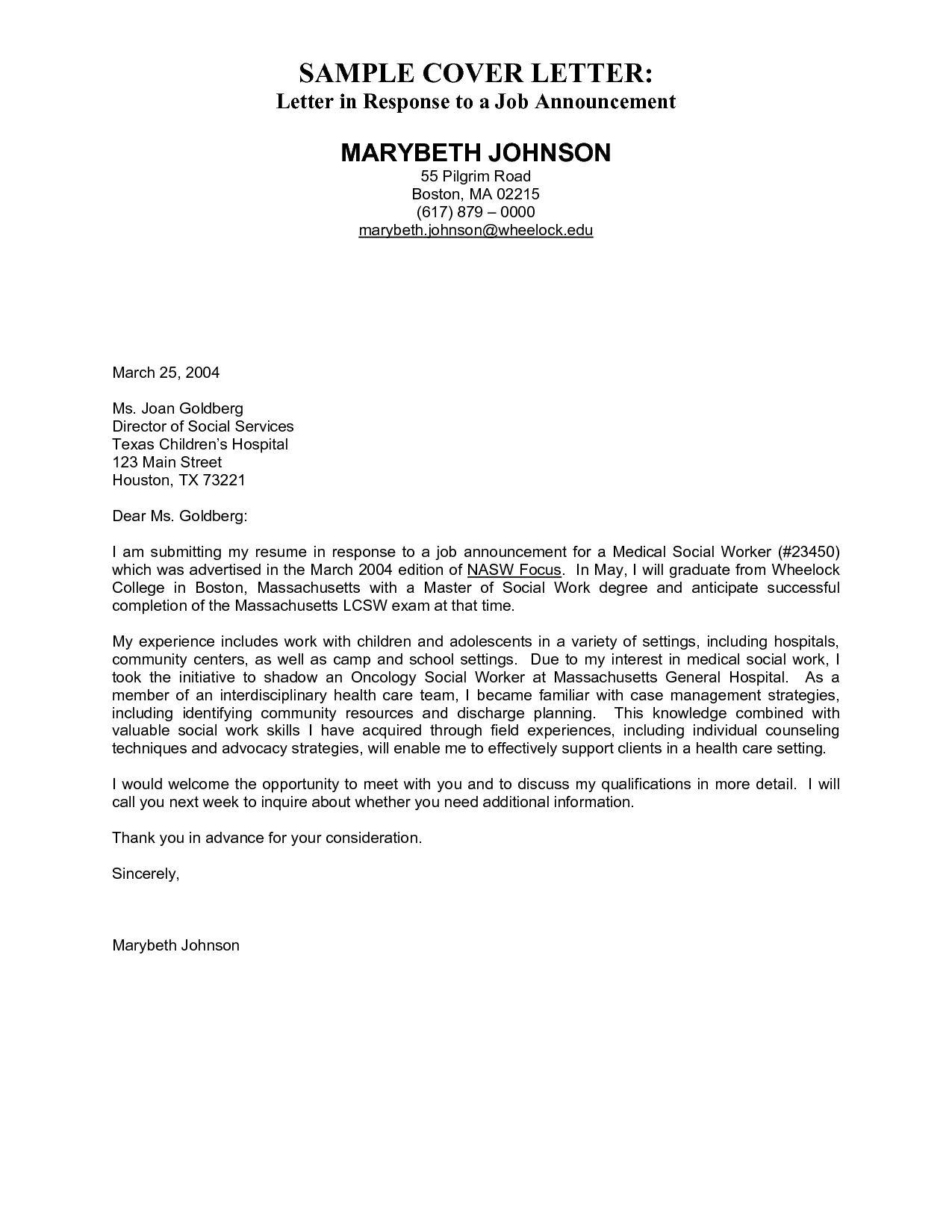What is a Cover Letter
A cover letter is a crucial document that accompanies your resume when applying for a job. It serves as a personal introduction, allowing you to highlight your skills, experiences, and enthusiasm for the position. Unlike a resume, which provides a snapshot of your qualifications, a cover letter allows you to elaborate on your achievements and explain why you are the perfect fit for the role. It provides a space to showcase your personality, writing skills, and genuine interest in the company and the specific job. A well-crafted cover letter can significantly increase your chances of getting an interview, making it an indispensable part of your job application strategy.
Why Cover Letters Matter
Cover letters matter because they offer a personalized touch that a resume alone often lacks. They demonstrate your communication skills, attention to detail, and understanding of the job requirements. Recruiters and hiring managers often use cover letters to gauge your writing abilities, assess your passion for the role, and determine if you’ve taken the time to research the company and the position. In today’s competitive job market, a compelling cover letter can set you apart from other applicants, showcasing your unique value proposition and increasing your chances of landing an interview. It allows you to tell your story and connect your skills and experiences to the specific needs of the employer.
How Cover Letters Help You
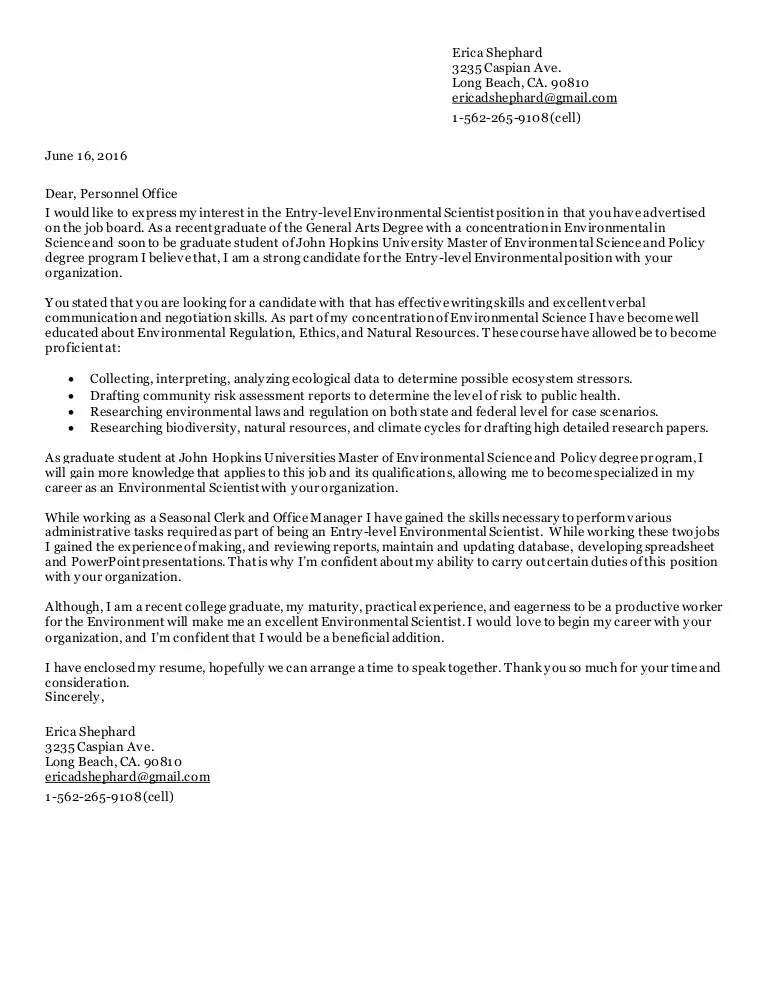
Cover letters help you by providing context to your resume, explaining career gaps, and expressing your genuine interest in the role and the company. They allow you to tailor your application to each specific job, highlighting the skills and experiences most relevant to the position. By demonstrating your research on the company and your understanding of its mission, you can show that you are not just looking for any job but are genuinely interested in the opportunity. A cover letter also provides an opportunity to showcase your personality and communication style, helping you make a memorable impression on the hiring manager. In essence, it is your chance to advocate for yourself and make a compelling case for why you should be interviewed.
Essential Cover Letter Elements
Contact Information
At the top of your cover letter, include your full name, address, phone number, and email address. This information should be clearly formatted and easy to read. Ensure your email address is professional; avoid using nicknames or unprofessional usernames. Providing your contact information makes it easy for the hiring manager to reach you if they are interested in your application. Double-check this information to make sure it is current and accurate, as a mistake here can prevent you from receiving a job offer.
Date and Salutation
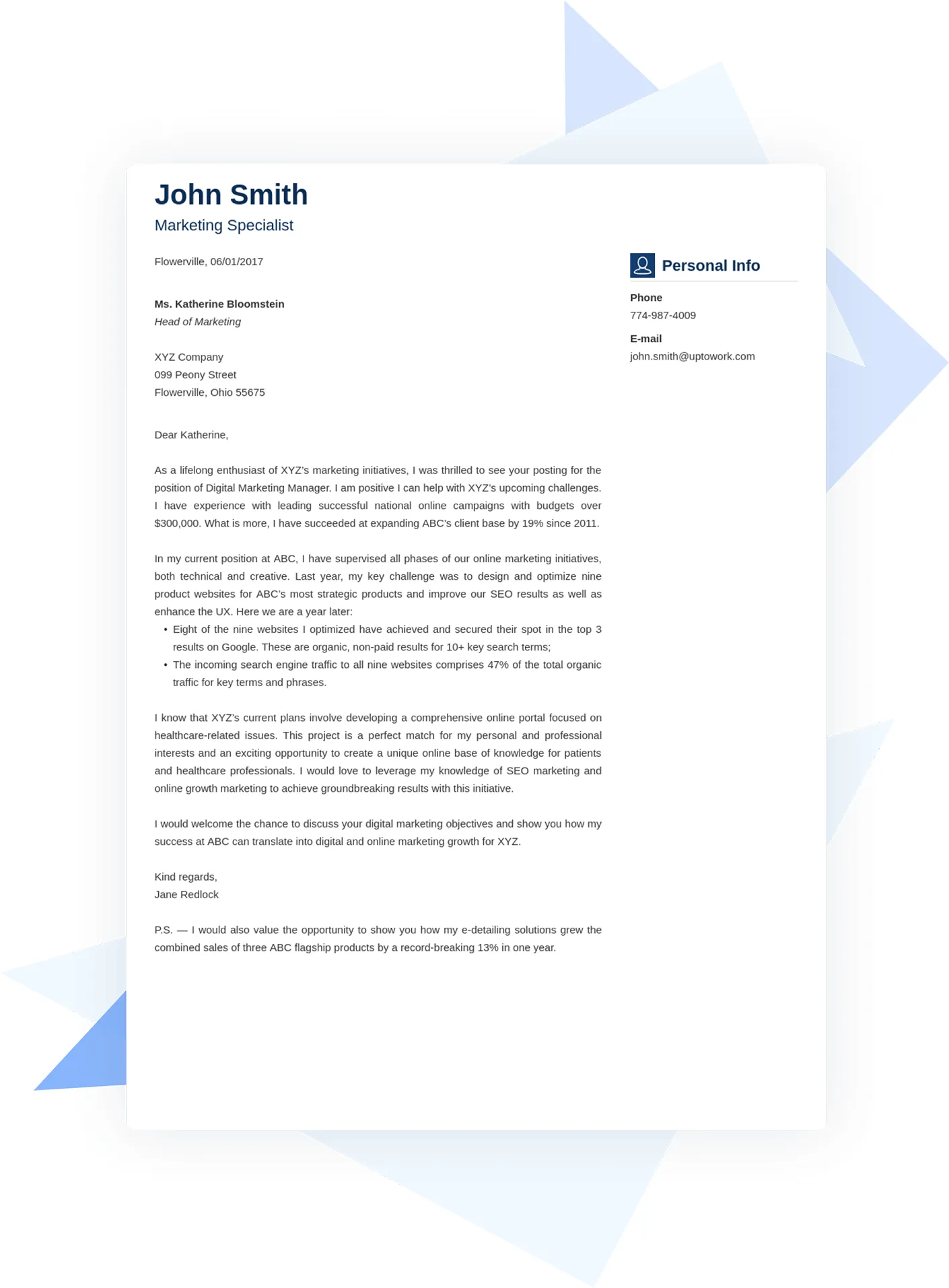
Following your contact information, include the date. Then, address the hiring manager by name if possible. Researching the hiring manager’s name can be a significant advantage. Use a formal salutation such as “Dear Mr./Ms./Mx. [Last Name].” If you are unable to find the hiring manager’s name, use a general salutation such as “Dear Hiring Manager” or “Dear [Department Name] Team.” A personalized salutation demonstrates your attention to detail and your interest in the specific role.
Opening Paragraph
The opening paragraph is your opportunity to grab the reader’s attention and make a strong first impression. Clearly state the position you are applying for and how you learned about the opportunity. Briefly highlight your most relevant skills and experiences, and express your enthusiasm for the role and the company. Keep it concise, impactful, and engaging. This paragraph should set the tone for the rest of your letter and entice the hiring manager to continue reading. Avoid generic phrases and aim to create a sense of excitement about your application.
Body Paragraphs
The body paragraphs are the core of your cover letter, where you provide more detail about your qualifications and experiences. These paragraphs should be well-structured and focused on the specific requirements of the job. Use these paragraphs to showcase your key skills, experiences, and achievements, and explain how they align with the needs of the employer. Provide concrete examples to support your claims, and quantify your achievements whenever possible. Tailor each paragraph to address a specific aspect of the job description and demonstrate your understanding of the role.
Highlighting Skills and Experiences
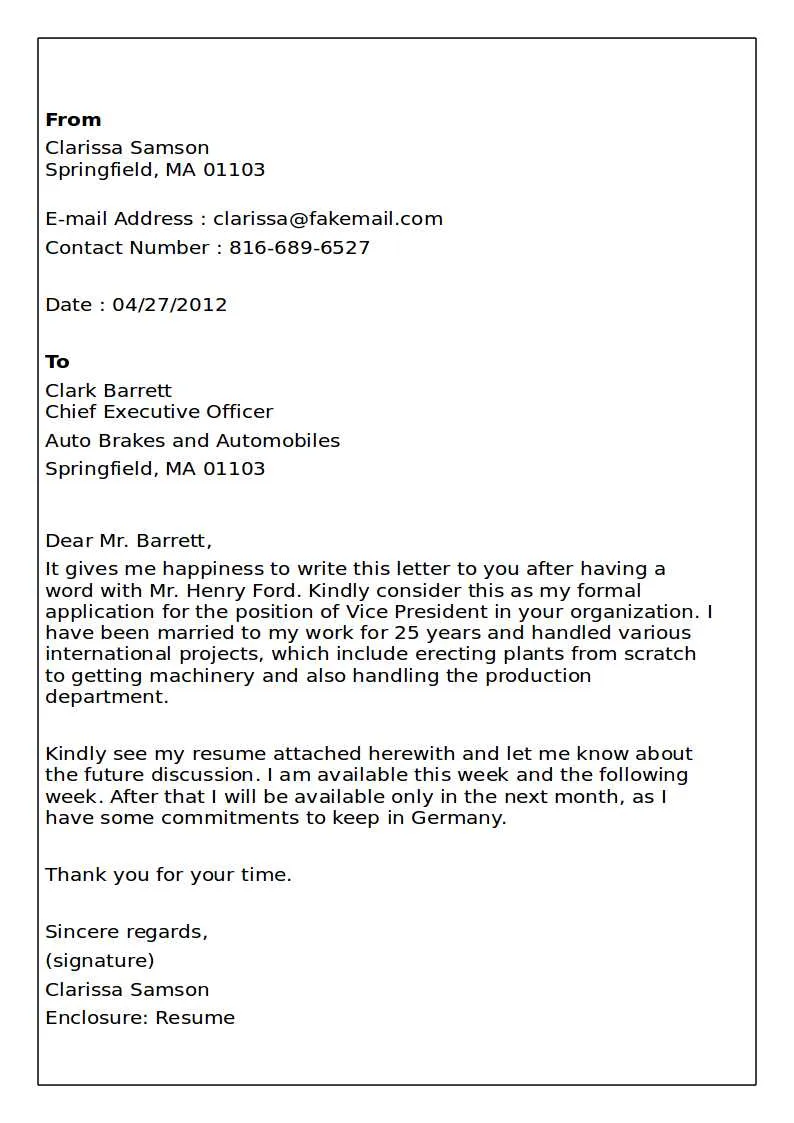
In your body paragraphs, highlight the skills and experiences that make you a strong candidate for the job. Carefully review the job description and identify the key skills and qualifications the employer is seeking. Then, provide specific examples of how you have demonstrated those skills in previous roles. Focus on achievements and results rather than simply listing your responsibilities. Use action verbs to describe your accomplishments and quantify your achievements whenever possible to demonstrate the impact you made in your previous roles. Show, don’t just tell.
Quantifying Achievements
Quantifying your achievements is a powerful way to demonstrate your value to a potential employer. Whenever possible, use numbers and data to illustrate your accomplishments. For example, instead of saying “Managed social media campaigns,” say “Managed social media campaigns that increased follower engagement by 30% and website traffic by 20%.” Quantifiable results make a stronger impression and provide concrete evidence of your skills and abilities. This allows the hiring manager to understand the tangible benefits you can bring to the role.
Tailoring to the Job Description
Customize your cover letter for each job application. Carefully analyze the job description and tailor your letter to the specific requirements and preferences of the employer. Highlight the skills and experiences most relevant to the role and use keywords from the job description to demonstrate that you understand the position. This shows the hiring manager that you have taken the time to understand their needs and are genuinely interested in the opportunity. Avoid using a generic cover letter; instead, personalize it to showcase your suitability for the specific role.
Closing Paragraph
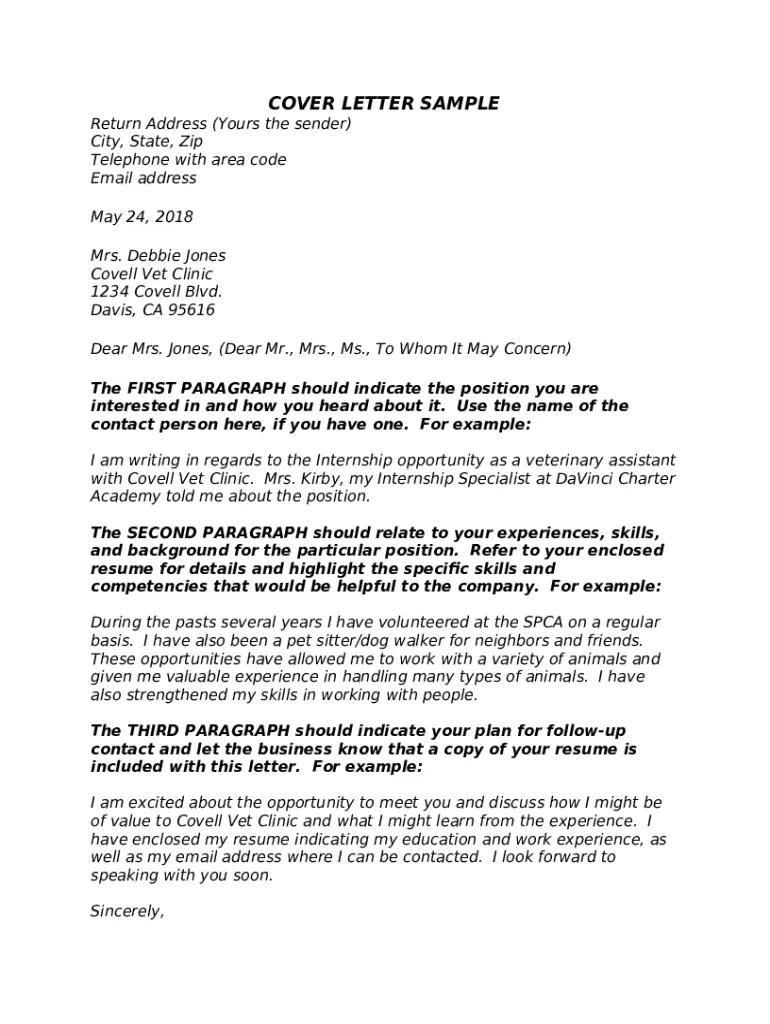
In your closing paragraph, reiterate your interest in the position and summarize why you are a strong fit. Thank the hiring manager for their time and consideration. Express your enthusiasm for the opportunity to discuss your qualifications further and reiterate your availability for an interview. Keep this paragraph brief, confident, and positive. This will leave a lasting impression of your professionalism and eagerness to join the team.
Call to Action
Include a clear call to action in your closing paragraph. State your availability for an interview and express your eagerness to discuss your qualifications further. This shows the hiring manager that you are proactive and enthusiastic about the opportunity. Make it easy for them to take the next step in the hiring process. For example, you might say, “I am available for an interview at your earliest convenience and can be reached by phone or email.”
Formal Closing and Signature
End your cover letter with a formal closing such as “Sincerely,” “Best regards,” or “Yours sincerely.” Leave space for your handwritten signature if you are submitting a printed copy. If submitting electronically, type your full name below the closing. Ensure the tone of your closing is professional and reflects the overall tone of your cover letter. Maintain a consistent level of formality throughout the document.
Cover Letter Formatting and Style
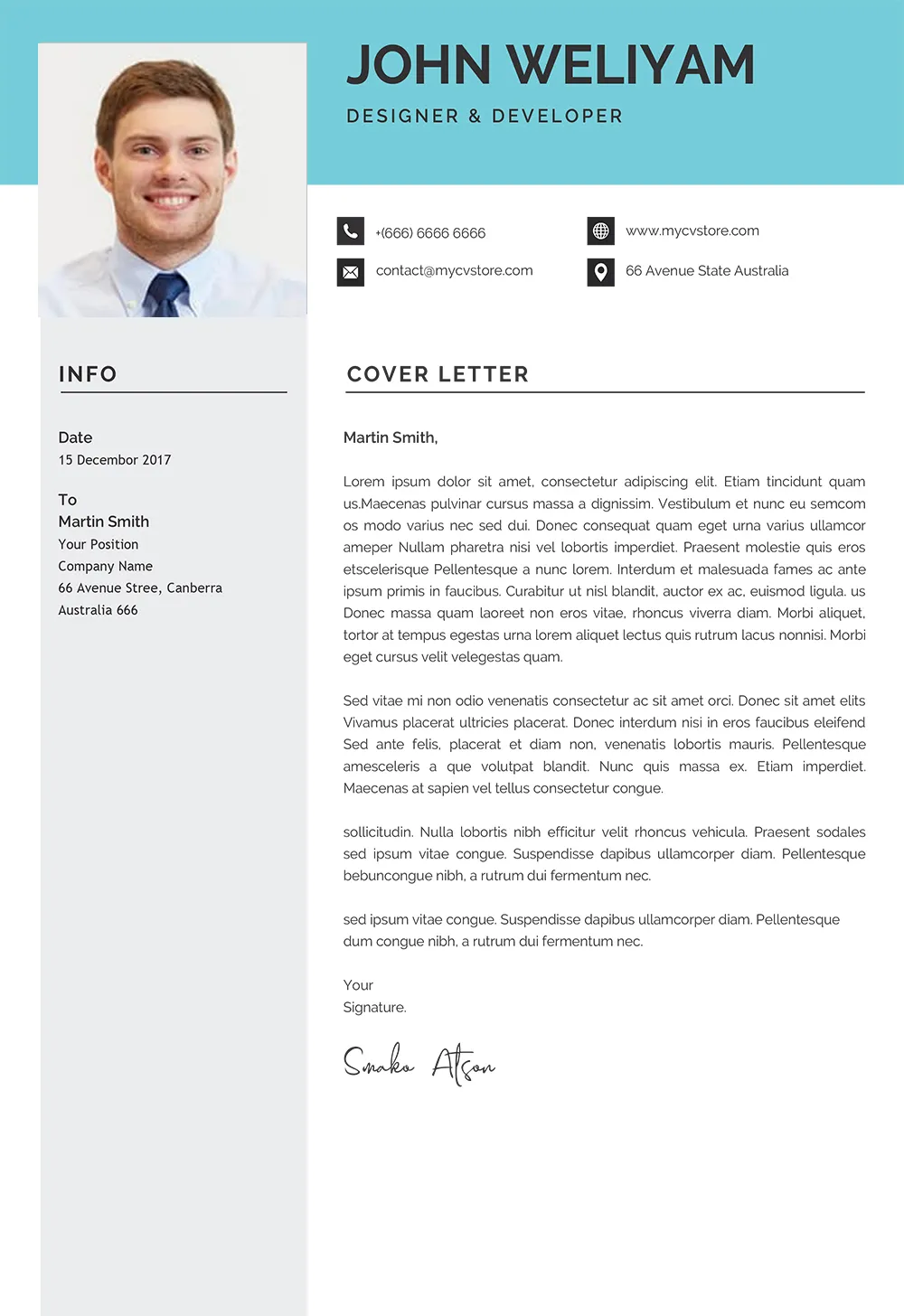
Font and Spacing Guidelines
Use a professional and easy-to-read font such as Times New Roman, Arial, or Calibri. Maintain a consistent font size (11 or 12 points) throughout the document. Use single-spacing within paragraphs and double-spacing between paragraphs. This formatting makes your cover letter easy to read and visually appealing. Avoid using unusual fonts or formatting, as they can distract the reader from the content. Ensure the text is properly aligned and the margins are consistent.
Tone and Language Considerations
Adopt a professional and confident tone throughout your cover letter. Use clear, concise language and avoid jargon or overly complex sentences. Proofread carefully for any grammatical errors or typos. Maintain a positive and enthusiastic tone, highlighting your genuine interest in the role and the company. Be authentic and let your personality shine through while maintaining a professional demeanor. The language should reflect your communication style and the culture of the company you are applying to.
Length Recommendations
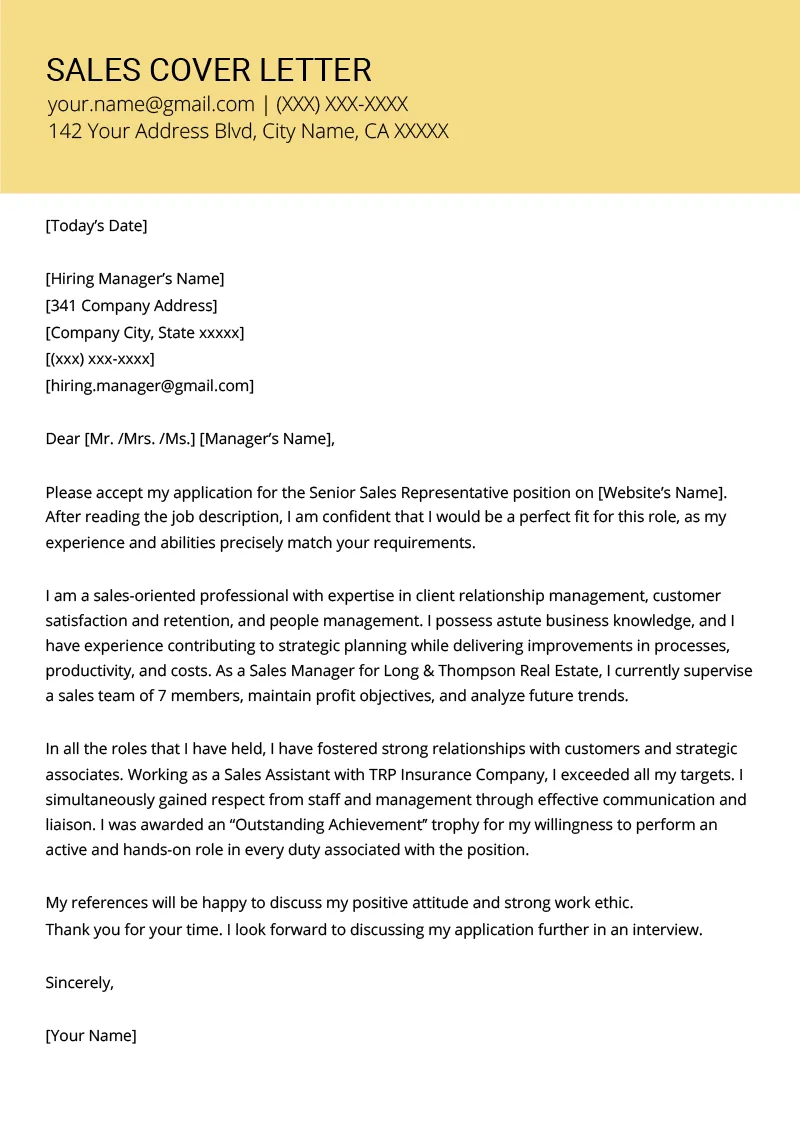
Keep your cover letter concise and to the point. Aim for one page, or a maximum of two pages if you have extensive experience or are applying for a senior-level position. Focus on the most relevant information and avoid including unnecessary details. Hiring managers are busy, so make sure your cover letter is easy to read and quickly conveys your key qualifications. The goal is to capture their attention and encourage them to read your resume.
Common Cover Letter Mistakes
Generic Letters
One of the biggest mistakes is sending a generic cover letter that is not tailored to the specific job or company. Hiring managers can easily spot generic letters, and they often end up in the rejection pile. Take the time to research the company and customize your cover letter to highlight the skills and experiences most relevant to the position. Show the employer that you’ve put in the effort to understand their needs and that you are genuinely interested in the opportunity. Addressing the letter to the correct person, and mentioning the job title correctly, are also important.
Typos and Grammatical Errors
Typos and grammatical errors are a major red flag for hiring managers. They indicate a lack of attention to detail and can damage your credibility. Proofread your cover letter carefully before submitting it, and consider having someone else review it as well. Use spell-check and grammar-check tools, but don’t rely on them entirely. Read your letter aloud to catch any errors that might be missed by automated tools. A polished, error-free cover letter demonstrates professionalism and attention to detail.
Lack of Research
Failing to research the company and the position is a significant mistake. A cover letter should demonstrate that you understand the company’s mission, values, and the specific requirements of the job. Research the company’s website, social media profiles, and recent news articles to gain a better understanding of their business. Mention specific aspects of the company or the role that appeal to you. Showing that you have taken the time to learn about the company demonstrates your genuine interest and increases your chances of getting an interview. This also helps you tailor your letter to their needs.
Overly Formal or Informal Tone
Maintaining the correct tone is crucial. An overly formal cover letter can sound stiff and impersonal, while an overly informal one can appear unprofessional. Strive for a balance between professionalism and personality. The tone of your letter should reflect the culture of the company and the nature of the role. Consider the industry and adjust your tone accordingly. Be confident and enthusiastic without being arrogant or presumptuous. Aim to create a positive and engaging impression on the reader.
Cover Letter Examples and Templates
Where to Find Templates
Numerous resources are available online for cover letter templates. Websites like Indeed, LinkedIn, and various career websites offer a wide range of templates for different industries and job types. These templates can provide a starting point for your own cover letter. However, remember to customize the template to reflect your own skills and experiences and the specific requirements of the job you are applying for. Always ensure the template is appropriate for the company and the role.
Adapting Templates to Your Needs
When using a template, tailor it to fit your individual circumstances and the job you’re applying for. Don’t simply copy and paste the template’s content; instead, replace the generic information with your own details and experiences. Adjust the language and formatting to reflect your personal style and the specific requirements of the job. Highlight your unique skills and achievements and demonstrate how they align with the employer’s needs. A template is a guide, but the content should always be your own.
Cover Letter FAQs
How long should a cover letter be
A cover letter should ideally be one page long. While two pages are acceptable if you have extensive experience or are applying for a senior-level position, it’s best to keep it concise. Hiring managers often have limited time, so focus on the most relevant information and avoid including unnecessary details. Your cover letter should quickly convey your key qualifications and encourage the reader to read your resume. Prioritize clarity and brevity.
Should I use a cover letter if a resume is required
Yes, you should almost always use a cover letter if a resume is required. Even if the job posting doesn’t explicitly mention a cover letter, it’s generally a good idea to include one. A cover letter allows you to provide context to your resume, highlight your skills and experiences, and express your enthusiasm for the role. It’s an opportunity to make a personal connection with the hiring manager and set yourself apart from other applicants. Consider it an essential part of the application package.
How to Follow Up on a Cover Letter
After submitting your cover letter and resume, it’s acceptable to follow up with the hiring manager or recruiter. Send a brief email a week or two after submitting your application, expressing your continued interest in the position and reiterating your qualifications. Keep the email concise and professional. If you haven’t heard back after a reasonable amount of time (e.g., two weeks), it’s acceptable to send a follow-up email to inquire about the status of your application. However, avoid being overly persistent or sending multiple follow-up emails.
